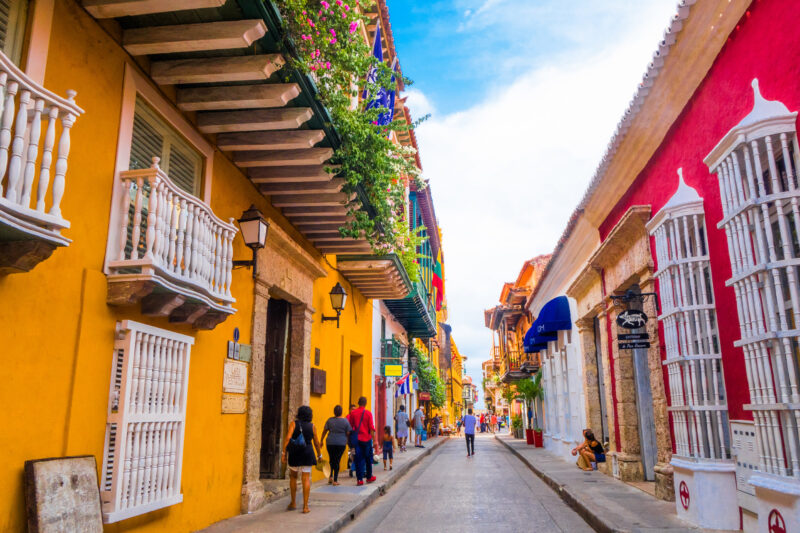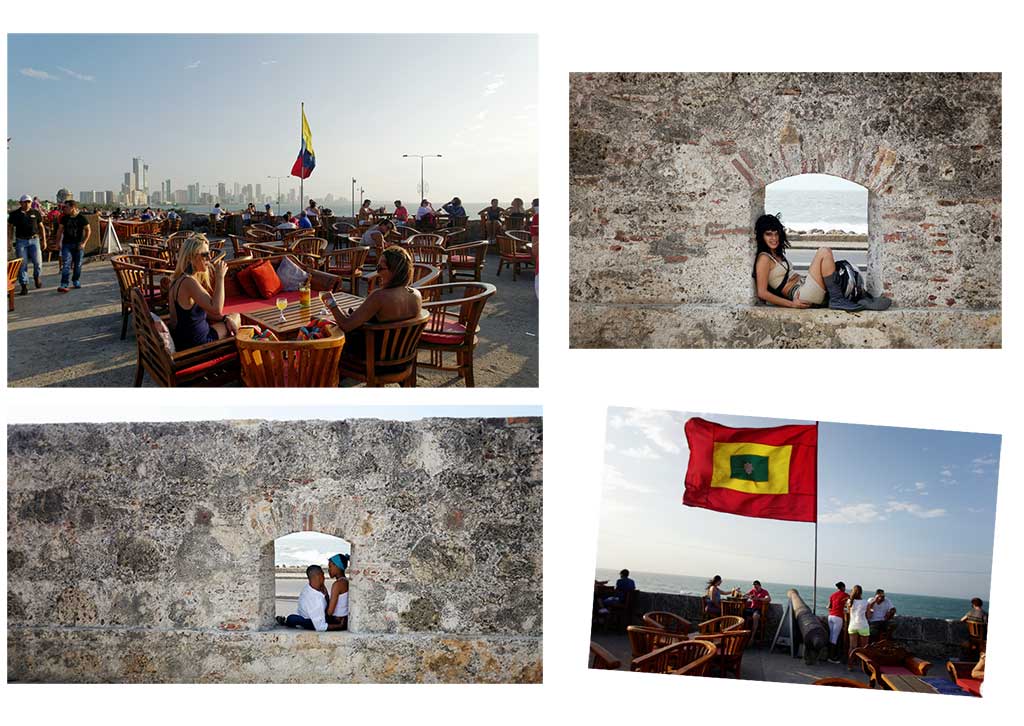
Cartagena’s Fortified Old City
Cartagena’s Fortified Old City is the best-preserved colonial city in Latin America. The walled city was constructed in the sixteenth century by the Spanish conquistador Pedro de Heredia, named Cartagena de Indias, after his birthplace in Spain. Located on Colombia’s Caribbean coast, the city has since served as an important port for trade between Europe and South America, earning its nickname “Queen of the Caribbean.” Cartagena is Colombia’s fifth-largest city by population after Bogotá, Medellín, Cali and Barranquilla.
Cartagena was once one of the most important cities in the Spanish Empire. With billions of dollars worth of gold, gems, exotic cash crops, and slave labor flowing through the city it was a ripe target for pirates and privateers like Sir Francis Drake. It’s no wonder then that the empire would spend as much money as they did to build massive fortifications around the city.
Today, the Old City Wall in Cartagena stands as a monument to that rough-and-tumble time when anxious lookouts scanned the horizon for an enemy’s sails.

Cartagena’s Old City Wall Stats
This structure is a marvel or architectural prowess and engineering finesse. Even modern construction companies would be hard pressed to produce such a magnificent structure.
• The wall stretches for 11 kilometers (6.8 miles) around the port and Old City.
• At points the walls themselves are several meters thick.
• The Old City Wall is crowned by several Bastions at which soldiers would have been stationed to ward off attacks.
• Constructed mostly from Coral Stone, it’s surprisingly ornate in places with graceful curves, arched passageways, sensual domes, and meticulously joined pieces.
• Construction began in 1586 and didn’t end for another 200 years!
• It cost the Spanish Empire well over 20,000,000 Spanish reals to complete–
• In 1985 the Old City Wall and the Old City inside it were designated UNESCO World Heritage sites.

The History of Cartagena’s Old City Wall
Though Cartagena was founded in 1533 by Pedro de Heredia and fortification began almost at once, the massive implementation of military design didn’t begin until 1751. Governor Francisco de Murga hired architects and called for European engineers (at great expense) to craft a detailed and cohesive plan for Cartagena’s defense.
The final product was simply amazing and, on a global scale, nearly unprecedented. Cartagena became the most fortified and well-designed military outposts in The New World surrounding the Old City and the massive Castillo San Felipe de Barajas overlooking it.
Visiting the Old City Wall Today
From atop the massive stone structure visitors can stare out over the Caribbean Sea and bask in the tropical sun. During the day the Old City Wall makes for an incredibly scenic backdrop and a historically education trip for the kids. The Old City Wall is even wheelchair accessible in certain places. However, it does take about 2 hours to walk leisurely along its entire length so be sure to avoid the hottest parts of the day.
As the sun goes down the Old City Wall becomes incredibly romantic. The daytime heat ebbs to a cozy sort of warmth and the tropical sun bathes the Caribbean Sea in a wash of color. Take a stroll with that special someone or stop at Baluarte (a bar on top of the wall) offers fresh cocktails and an unbelievable view.
During high season or various festivals throughout the year, the wall and the bastions along it come alive with performance artists and buskers providing live music, traditional dance, and even visual art exhibitions.
Come for the romance or the history and Cartagena’s Old City Wall won’t disappoint.
Martha Hampton
Martha Hampton
Home Curator
Founder of Cartagena Colombia Rentals & Hampton Property Rentals LLC

